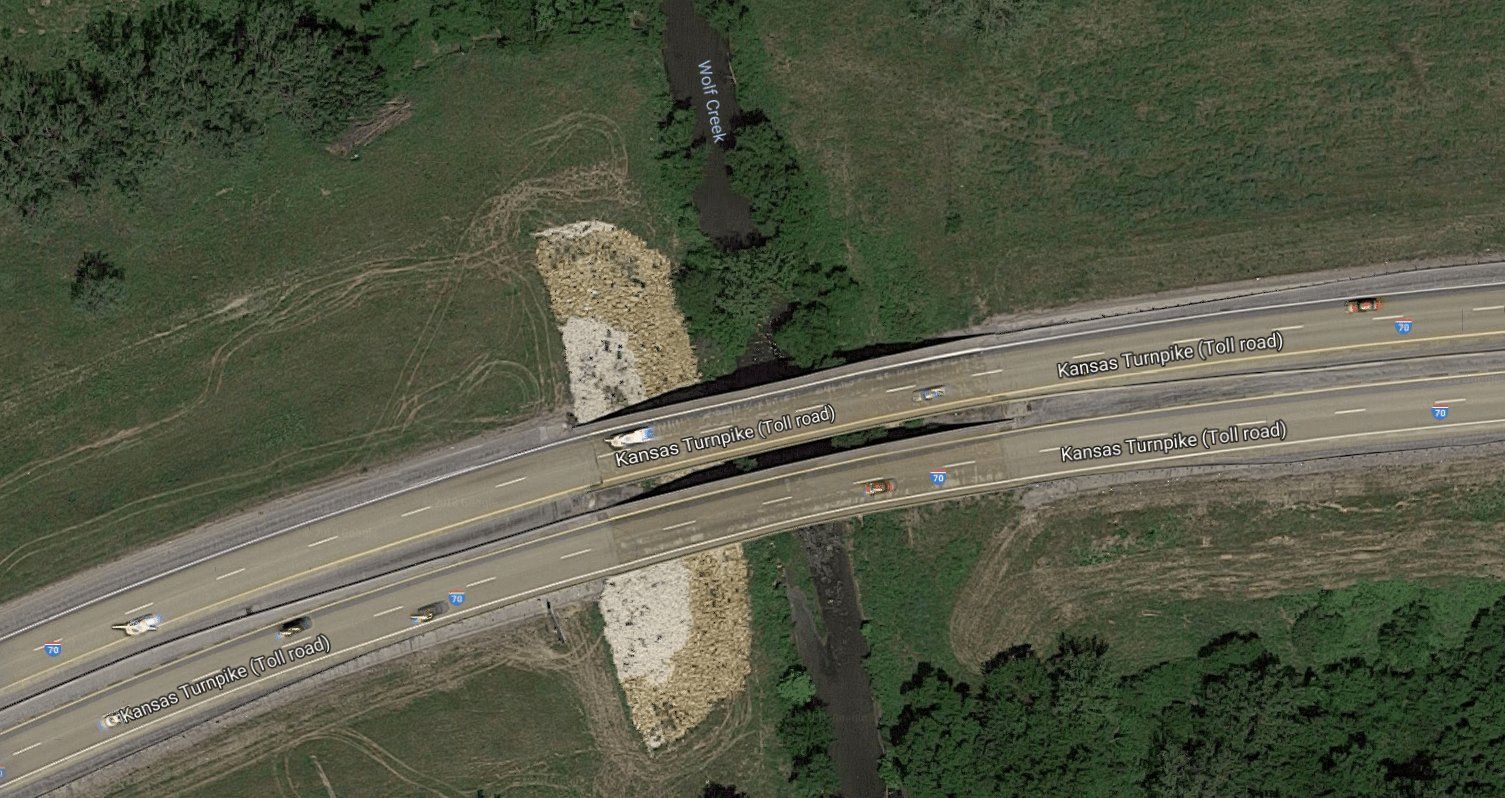
My Bridge across Wolf Creek
The Kansas Turnpike
The Kansas Turnpike is a 236-mile-long freeway-standard toll road that lies entirely within the U.S. state of Kansas. It runs in a general southwest–northeast direction from the Oklahoma border to Kansas City. It passes through Wichita, Topeka, and Lawrence. It was built from 1954 to 1956, predating the Interstate Highway System.
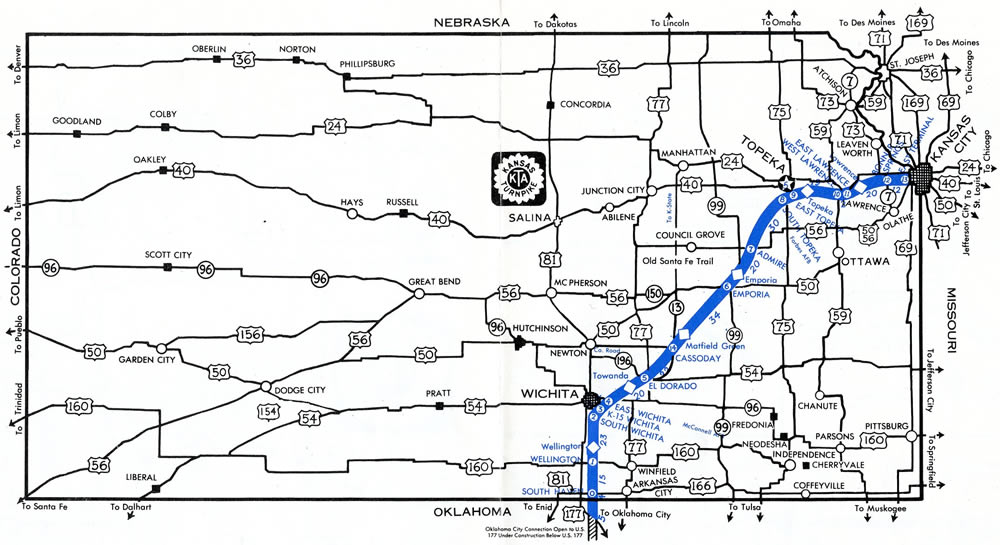
My Summer of 1956
Ground was broken for the Kansas Turnpike on December 31, 1954. Construction of the entire length of the turnpike was scheduled to take place all at once, with the turnpike partitioned into 14 parts, and the overall length also divided into 43 smaller portions. After almost 22 months of construction, the road was opened on October 20, 1956.
Many contractors were used to build the turnpike and its bridges. A small contractor, whose name I think was "Kansas Construction Company" had a subcontract for four bridges between Lawrence, KS and Kansas City, Kansas. One of those dual span bridges crossed wolf creek.
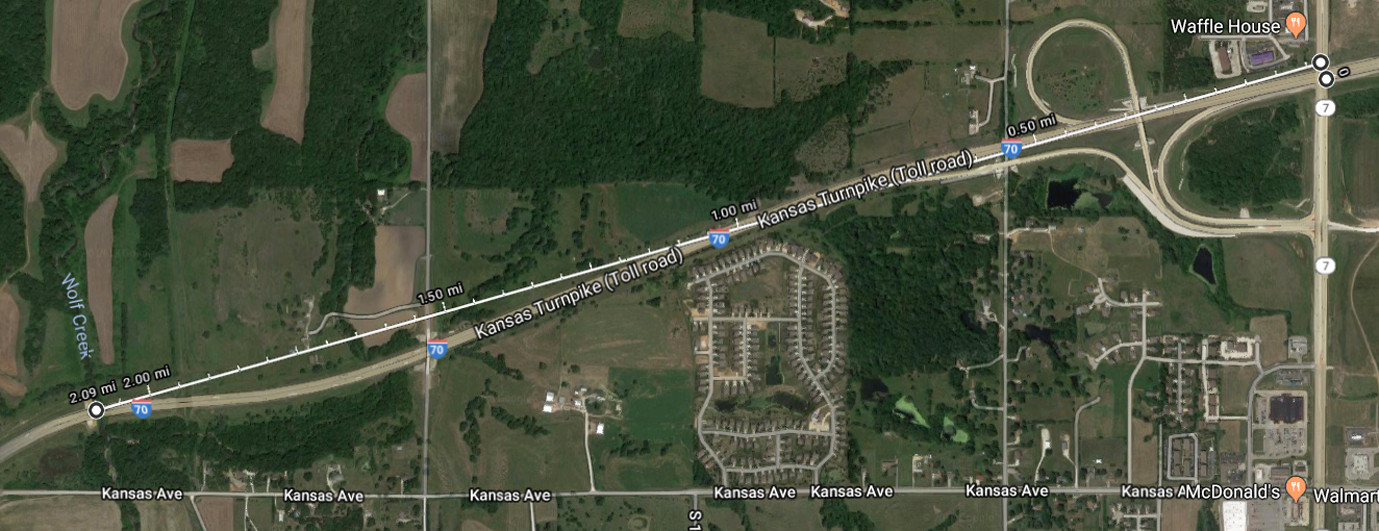
I was in my junior year at the University of Kansas, but had also retained my membership as an ironworker (http://www.ironworkers10.com/). My father, grandfather, and uncles had helped in founding Local 10 of the Ironworkers Union, and I was on good terms with the the manager who assigned jobs. I worked summers and during college vacations as an ironworker, allowing me to earn money to supplement my GI Bill payments for college.
A call came in from Kansas Construction Company for a forman to build a bridge over Wolf Creek. I had never been a forman, and that did require the ability to read blueprints, something I watched my father and grandfather do many times, but had never done myself. But what the heck? I could figure it out. So I asked for the job, which paid considerably more than a journeyman ironworker.
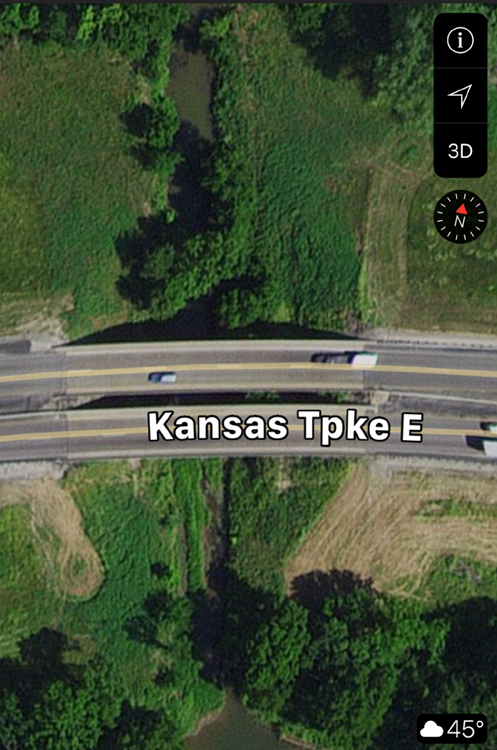
Not a Simple Bridge
As you can see in the image, the bridge had two curved spans over wolf creek. Being curved made the job more complicated. Nevertheless, "I could do this", Right?
After the structural steel was in place, and the carpenters had installed forms, we had to install reinforcing rods before pouring the concrete.
I dutifully followed the plans and my ironworker crew installed the rods on the north span. Then the inspector came, checked our work carefully, and then we ordered concrete to be delivered and it was poured. So the north span was finished.
We then installed reinforcing rods on the South span, and when we finished, we were surprised to see that we had a very large number of reinforcing rods left over. Had too many been ordered?
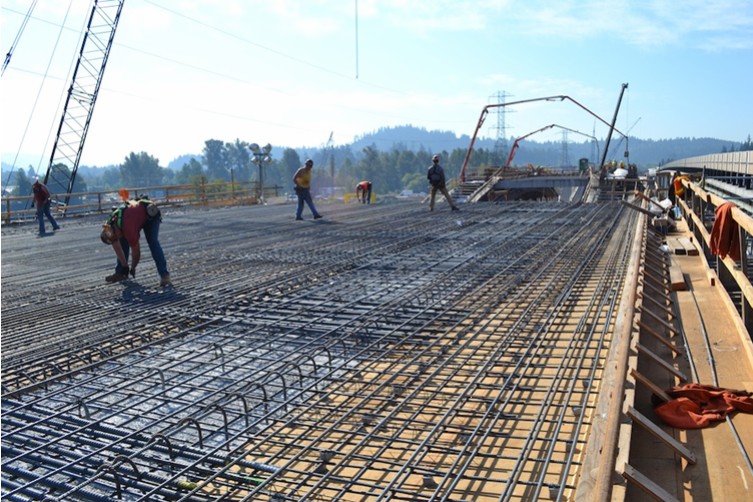
Beware the North Span of the Bridge over Wolf Creek
Well, apparently we spaced the rods on the North span twice as far apart as they were supposed to be, and the inspector failed to detect that problem prior to pouring the concrete. We had done the South span correctly, but we still had left over all of those unused reinforcing rods.
So what do we do? I asked the Inspector and the job superintendent. They had the solution. Lift the pile of iron rods with the crane and drop them into Wolf Creek. So we did!
I wonder what happened to all of that iron in the creek over these past sixty seven years. And what of the bridge? How did it hold up so well? What about those big semi trucks pulling loads of missles or other dangerous material?
Well, my only consolation is that I have learned recently that the spacing on bridge decks of the reinforcing bars is now wider, often as much as 12 inches, and I know we had those on Wolf Creek closer together than that.
But whenever I cross the bridge at Wolf Creek, I remember those summer days as an Ironworker.